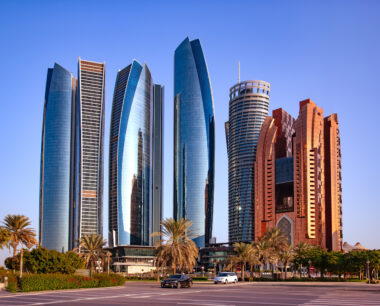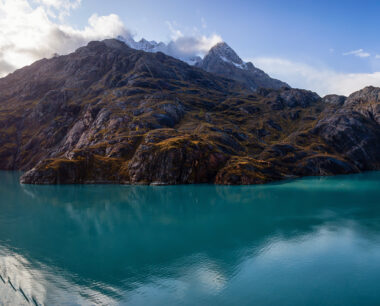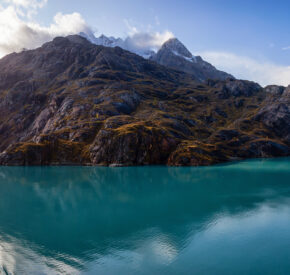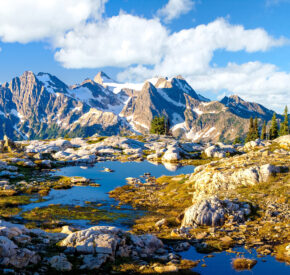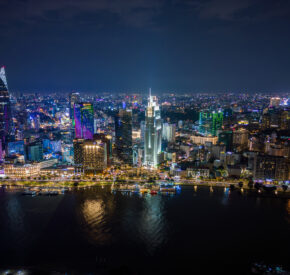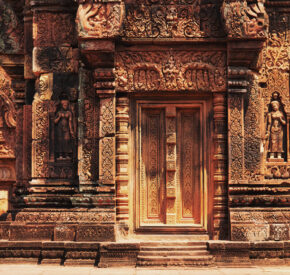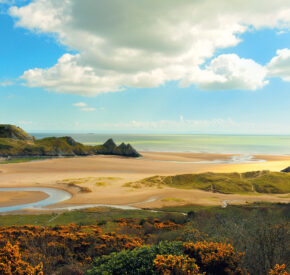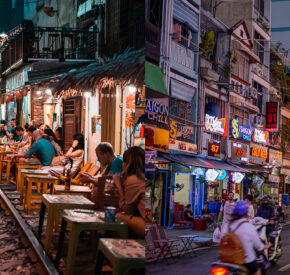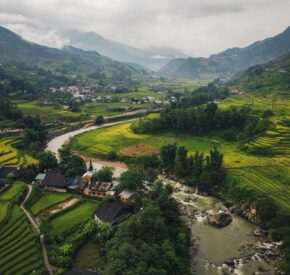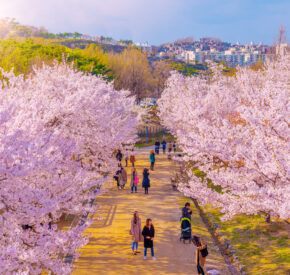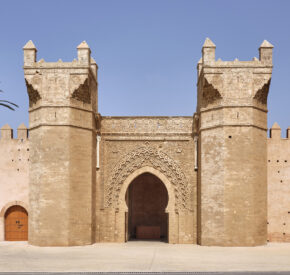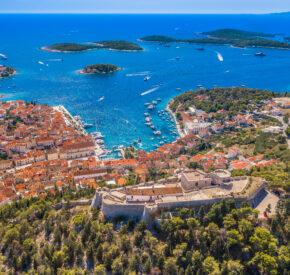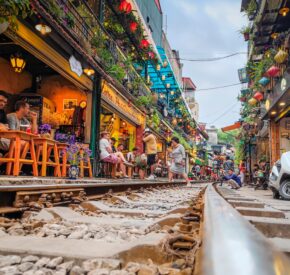
21 of the best UNESCO World Heritage Sites to visit around the world
From ancient tombs to Welsh castles, we celebrate the UNESCO-listed wonders that make the world a more cultured place…
The United Nations Educational, Scientific and Cultural Organization (UNESCO) was born out of the horrors of the Second World War with the remit of spreading peace.
The idea of designating and conserving World Heritage sites – places deemed of great import for their cultural, historical or scientific value – was ratified in 1972. Just six years later, the first 12 were announced, ranging from Ecuador’s Galápagos Islands to Germany’s Aachen Cathedral.
Today, over one thousand sites have been listed and protected for posterity, with a new batch added each July. The variety is staggering, but the idea is that each one makes the world a more enriching, more fascinating, more united place.
Wondering where to start? Here are 21 of the best UNESCO World Heritage Sites we think you should be visiting in 2025 and beyond.
1. Abu Simbel, Egypt

Rescuing the ancient Nubian temples of Abu Simbel from the rising Nile wasn’t just important for Egypt, it revolutionised the global approach to safeguarding heritage.
In 1968, the complex built for Ramses II in around 1260 BC was cut into 2,000 pieces and moved – brick by brick – to higher ground. Now it’s the headline act of a UNESCO site that includes other Nubian Monuments, such as the Sanctuary of Isis at Philae, and a powerful symbol of conservation.
Get there: Abu Simbel is 280km south of Aswan; 30 minutes by plane, about three hours by bus.
Read next: Egypt guide Ashraf Masoud: “There’s more to Egypt than the pyramids”
2. Al Ain, United Arab Emirates
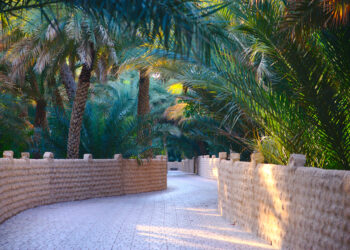
The United Arab Emirates may be better known for its modern skyscrapers, but one of the best UNESCO World Heritage Sites can be found in one of the country’s hidden gems: Al Ain.
Part of the emirate of Abu Dhabi, Al Ain has been continuously occupied since the Neolithic period, and is home to a number of sites dating back to 2500 BC. Inscribed in 2011, the listing includes circular stone tombs, residential buildings, palaces and towers. Among the visited is Al Ain Oasis, which is an example of the ancient falaj irrigation systems that are still in use today to bring water down from the Hajar Mountains to water the date palm trees here.
Get there: Al Ain is around a 90-minute drive from Abu Dhabi.
3. Caral-Supe, Peru
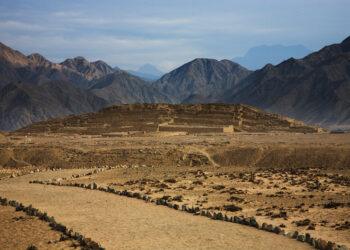
Fellow Peruvian UNESCO site Machu Picchu might get more of the plaudits and punters, but for historical heft, Caral-Supe wins hands down.
This sacred city, once capital of the Norte Chico peoples, is around 5,000 years old, making it the oldest centre of civilisation in the Americas.
Its ceremonial pyramids were in use 500 years before the Egyptians built those at Giza. Set on an arid desert terrace above the lush Supe Valley, the extensive site incorporates both public and private buildings, including circular sunken plazas, an amphitheatre and six large pyramidal structures; the largest, the Templo Mayor, measures 150m long and 28m high.
Get there: Caral-Supe is 200km north of Lima.
4. Changdeokgung, South Korea
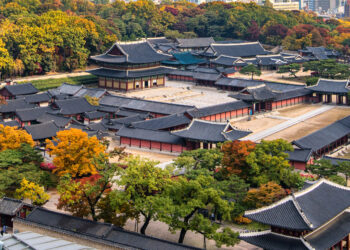
Seoul, South Korea’s capital, famously has five royal palaces, but only one of them is on UNESCO World Heritage Site list: Changdeokgung.
While the buildings of the palace have been destroyed by fire and undergone various reconstructions, the committee decided to inscribe the palace on the list in 1997 because of the level of authenticity in the restoration.
Open from Tuesday to Sunday, be sure to book in for a tour of the Secret Garden when visiting, too.
Get there: Seoul is a 12-and-a-half hour flight from the UK
Read next: South Korea trip planner
5. Churches of Chiloé, Chile
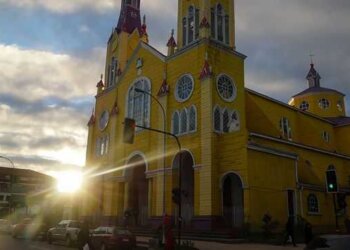
The Chiloé Archipelago, south of the Chilean Lake District, was once the preserve of the native Chono and Huilliche peoples; then came the Spanish conquistadores and, from the 17th century, Jesuits and then Franciscans, eager to convert the locals.
To that end, a ring of churches was constructed across the islands; today, 70 mission churches remain, 16 of them recognised by UNESCO for their wooden architecture and neat fusion of European and local traditions.
Plan a church-hop: highlights include the tri-towered sky-blue Tenaún and 53m-long Quinchao.
Get there: Chiloé Island is around two hours from Puerto Montt airport; buses run via the Chacao Channel ferry.
6. Hegra, Saudi Arabia
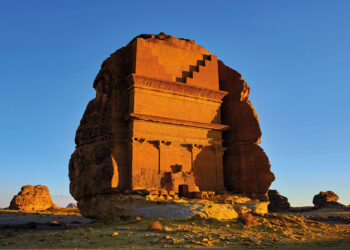
You may well be familiar with Petra in Jordan, a heritage site from the Nabataean Kingdom dating back to 3rd century, but if you’re looking for an equally-impressive alternative without quite so many crowds, consider Saudi Arabia’s Hegra.
Inscribed on the World Heritage List in 2008 (the first in the Kingdom), there are 111 monumental tombs here, dating from the 1st century BC to the 1st century AD, alongside cave drawings and ancient inscriptions from even before the Nabataean period.
Get there: Flights to AlUla from Riyadh take around two hours.
Read next: Petra versus Hegra: Discovering the land of the Nabataeans in Jordan and Saudi Arabia
7. Gwynedd castles, Wales
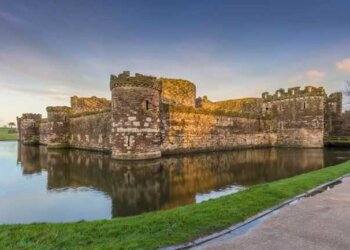
After his invasion of North Wales was completed in 1283, Edward I embarked on the era’s most ambitious building project: a network of new castles to secure the territory for the English crown.
Now is as good time as ever to visit the four coastal bastions encompassed in UNESCO’s ‘Castles and Town Walls of King Edward in Gwynedd’. This includes beautifully symmetrical Beaumaris, rock-top Harlech, the beefily fortified town of Caernarfon and the well-preserved ramparts and turrets of Conwy.
Get there: Harlech and Conwy have mainline train stations. You can link all four by walking the Wales Coast Path (a stately 1,400km).
8. Kathmandu Valley, Nepal

An earthquake in April 2015 devastated UNESCO’s Kathmandu Valley site, with the Durbar Squares of Patan, Hanuman Dhoka (Kathmandu) and Bhaktapur almost completely destroyed.
But all was not lost. UNESCO proposed a plan to restore the whole site and repairs are still underway – museums have reopened and the cracks in Boudhanath’s vast stupa have been filled.
The plan to ‘build back better’ should ensure that when the valley’s tiered temples and Buddhist shrines are finally restored, they’re still worthy of their World Heritage status.
Get there: Kathmandu is about a 12-hour flight from the UK, plus stopover.
9. Lalibela, Ethiopia
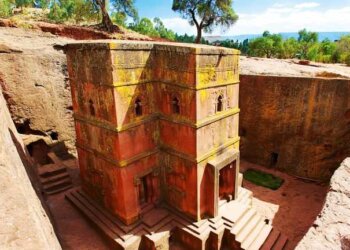
The medieval rock-hewn churches of this ‘New Jerusalem’ in the highlands of Ethiopia were among the first 12 sites designated by UNESCO in 1978 – a nod to their splendour.
With the help of angels (allegedly), these sunken chapels were chiselled from monolithic blocks, with windows, floors, doors and decoration subsequently carved in.
Colonnaded Bet Medhane Alem, the biggest, is more than 11.5m high; some are only accessible via tunnels or ropes. Despite its age, Lalibela remains a place of devotion, alive with pilgrims, swirling incense and hypnotic chants. It’s like stepping back 900 years.
Get there: Lalibela is a 90-minute flight from Addis Ababa.
10. Mesa Verde National Park, USA

UNESCO designated its first batch of World Heritage sites in 1978, and this cluster of Ancestral Puebloan ruins in south-west Colorado was one of that original dozen.
The only US national park focused solely on archaeology, Mesa Verde comprises a massive concentration of Native American dwellings built from the sixth to the 12th centuries on a verdant plateau, 2,600m above sea level.
Within the park, 4,400 sites have been recorded, ranging from simple pits and hollows to elaborate multi-storey cliff mansions with more than 100 rooms.
Get there: Mesa Verde is located off Route 160, 14km east of Cortez; it lies around 600km south-west of Denver.
11. Old Havana, Cuba
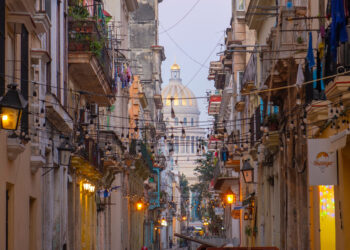
Havana was founded in 1519 by the Spanish, and so celebrated its 500th a couple of years ago. However, years don’t pass in a regular way in this time-warp city, beloved for its dishevelled mansions, leafy plazas, salsa-swaying streets, vintage cars and general state of appealing disrepair.
Listed by UNESCO in 1982, Habana Vieja (Old Havana) is undergoing a long restoration to ensure it remains the most impressive historic city centre in the Caribbean.
Explore on foot, weaving between the five large plazas, the cathedral and out to the fortifications that protected this once-key port, including one of the largest colonial fortresses in the Americas.
Get there: Havana is around a ten-hour flight from the UK.
12. Rajasthan Hill Forts, India

The Rajput princes knew how to live. These rulers, who flourished in northern India from the eighth to the 18th centuries, built some truly magnificent fortresses, a handful of which were jointly recognised by UNESCO back in 2013.
They are a varied sextet: Jaipur’s Amer Fort (pictured), desert-flung Jaisalmer Fort and Sawai Madhopur, which sits within tiger-prowled Ranthambhore National Park, are well-known on the tourist circuit. Lesser-visited are the riverside Gagron Fort, in the Jhalawar district, and Kumbhalgarh, near Udaipur, which has walls measuring 38km long.
Top pick, though, has to be the majestic Mewar fortress of Chittorgarh, an enormous clifftop cluster of gates, palaces, towers and temples comprising the country’s biggest walled complex.
Get there: Railways connect Jaipur, Udaipur and Chittorgarh.
13. Ravenna, Italy
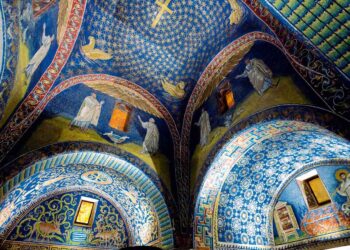
Italy has more UNESCO sites than any other country, and the Emilia Romagna city of Ravenna, one-time capital of the Western Roman Empire, has eight of them, known as the ‘Early Christian Monuments of Ravenna’.
All date from the fifth and sixth centuries, and chief among them is the Mausoleum of Galla Placidia, built for the sister of Emperor Honorius who made Ravenna the capital in 402 AD.
Austere outside, its interior is a kaleidoscope of rich, elegant mosaics, including a cupola sparkling with stars. Combine the sites with dips in the Adriatic and indulging in the fine regional cuisine and a glass of Sangiovese wine.
Get there: Ravenna is 70km from Bologna; trains and buses connect the two.
14. Robben Island, South Africa

Nelson Rolihlahla Mandela was born in the Eastern Cape village of Mvezo on 18 July 1918 but spent 18 years, from 1964 to 1982, incarcerated on this small outcrop just off Cape Town.
Robben Island is now a living museum, where a former prisoner-turned-guide will take you on a tour. Visit the old leper graveyard, the African penguin colony, the lime quarry where Mandela and the other inmates were forced to toil, and the Maximum Security Prison, where you can walk the corridors, ascend the watchtowers and finish your explorations at Mandela’s two-metre by three-metre cell.
Get there: Robben Island is roughly a 30-to-60-minute ferry ride from Cape Town’s Victoria & Alfred Waterfront.
15. Sambor Prei Kuk, Cambodia

Inscribed onto the UNESCO list in 2017, the impressive, forest-cloaked complex of Sambor Prei Kuk comprises over 100 temples yet sees precious few visitors.
Predating Angkor, this archaeological site on the eastern bank of Tonle Sap lake was once capital of the Chenla Empire, which thrived in the late sixth and early seventh centuries, and helped inspire the Khmer-style architecture seen at Cambodia’s more famous UNESCO site.
Hire a guide, both for greater insight and protection again unexploded ordnance, and explore a quiet mix of still-standing temples, sandstone carvings and crumbling ruins that are slowly being swallowed by the jungle.
Get there: Sambor Prei Kuk is 30km north of Kampong Thom and 175km east of Angkor.
16. Skellig Michael, Republic of Ireland
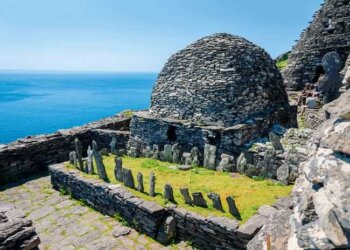
Clinging onto a scatter of pyramidal rocks off the Irish coast, this Gaelic Christian monastic settlement is thought to have been founded in the sixth century.
Monks lived precipitously, moving between the hermitage, beehive-shaped huts and the man-made terraces via steep stone steps.
These remote islands was abandoned in the late 12th century, but soon became a pilgrimage site, first for Catholics, then for movie-lovers when it played the home of Luke Skywalker in the recent Star Wars films.
Get there: Skellig Michael is 12km off Portmagee, south-west Kerry; boat trips run to the islands.
17. Sukhothai, Thailand
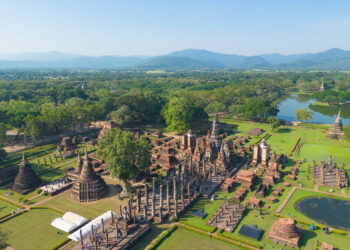
Much of Thai culture can be traced back to the Kingdom of Sukhothai in the 13th and 14th centuries, and those with a interest in this history can uncover it for themselves at Sukhothai.
The UNESCO World Heritage Site includes Sukhothai, Si Satchanalai and Kamphaeng Phet, and visitors can explore the various temples on the site and the architectural styles that influenced modern Thailand.
While this isn’t on the itinerary for many tourists, it definitely should be.
Get there: Buses from Bangkok take around seven hours, but you can also take an hour-long flight.
18. Tikal National Park, Guatemala
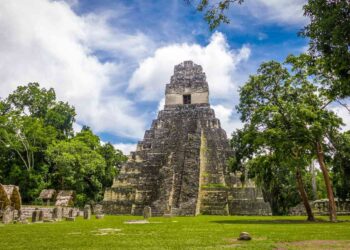
The Maya ruins at Tikal – and across the Petén region – are vast.
What’s more, research using LiDAR laser technology, which digitally removes the forest from aerial images, indicates the ruins are far more complex than first thought, revealing previously unknown structures and links between sites that were inhabited for 1,400 years from the 6th century BC.
This all adds to the ‘what else could be here?’ frisson as you roam a Maya metropolis of temples, squares and palaces.
Get there: Tikal is around 75 minutes’ drive from the town of Flores.
19. Troy, Turkey

The ancient Anatolian city of Troy is easily one of the world’s most famous archaeological treasures, founded in the third millennium BC by the Hittites and made a household name by Homer’s Iliad.
The ruins, rediscovered in the 1870s, are extensive, and span millennia of occupation. You can see the early defensive walls and later Greek and Roman temples; also, the surrounding plains are littered with human history, from prehistoric settlements and Ottoman bridges to monuments to the First World War Battle of Gallipoli.
Get there: Troy is a 45-minute minibus ride from the city of Çanakkale, which has an airport.
20. Tsodilo Hills, Botswana
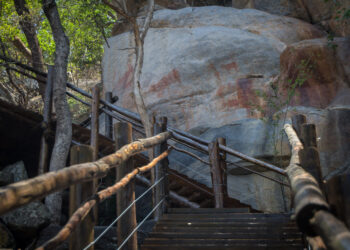
Safari buffs descend on Botswana for its wonderful wildlife. But less lauded is the country’s wealth of rock art.
The Tsodilo Hills have been dubbed the ‘Louvre of the Desert’ – over 4,500 paintings are clustered in a small patch of quartzite rocks in the Kalahari, in the country’s north-west.
San people view this as the site of first Creation, a place frequented by ancestral spirits, and have daubed the rocks with various figures, animals, shapes and geometric patterns. While some were painted as recently as the 19th century, others are thought to date back more than 20,000 years.
Get there: Tsodilo is a four-hour 4WD trip from the village of Shakawe, about 370km from Maun.
21. Valletta, Malta
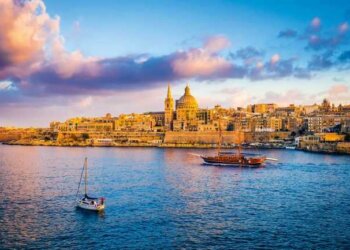
Strategically sited Malta has been ruled by Phoenicians, Greeks, Carthaginians, Romans, Byzantines, Arabs and the Order of the Knights of St John.
Thus its diminutive capital Valletta, perched on a hill between two natural harbours, is a dense layer cake of monuments – according to UNESCO, ‘one of the most concentrated historic areas in the world’.
The best way to get a sense of the fortified city is aboard a dghajsa (traditional boat), then visit the Baroque dazzle of St John’s Co-Cathedral and the opulent Grand Master’s Palace, a centre of power from the 16th century onwards.
Get there: Valletta is connected to many UK airports; flight time is from around three hours.
Read next: 12 historic hotel stays in Malta




